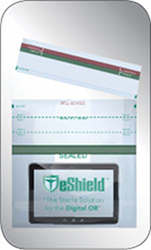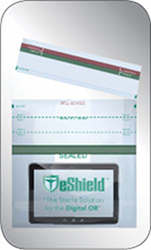
Like workers in other fields, medical professionals have quickly adopted the use of smartphones and tablet PCs to streamline their work processes. In particular, surgeons use these devices to access and manipulate reference materials, patient images, and medical records during surgical procedures, thereby eliminating the need to rely on technicians outside the sterile operating field to assess, manipulate, or otherwise interface with critical information.
Over the last few years, these electronic devices have become increasingly incorporated into surgical procedures on a functional level, taking advantage of the device’s onboard camera, touchscreen interface, and wireless connectivity, to augment the surgical tools already in use.
"The beauty of having the technology at your fingertips is that some of the new surgical devices, like the minimally invasive cameras or instrumentation for arthroscopic surgery or robotic surgery, are now tablet-controlled," says Dr. Alexander Meininger, an orthopedic surgeon in Steamboat Springs, CO, who uses iPads and smartphones during surgical procedures to access and manipulate patient images, or to capture video of the operation for teaching, training, or patient education purposes.
However, electronics need to be properly covered to prohibit contamination of the sterile operating field. Along with Whitney Medical Solutions, Meininger created a disposable cover for electronic devices such as tablets and smartphones called the eShield, to provide access to tablets and smartphones in the surgical field. The eShield features a clear polyethylene pouch that can allow the surgeon to manipulate a touchscreen even while wearing surgical gloves, and currently is the only sterile cover approved by the U.S. Food & Drug Administration.
Not surprisingly, other surgeons around the world are harnessing the power of tablets and smartphones. A clinical trial is being conducted at the University Medical Centre Mannheim’s Urology Clinic in Germany to compare the effectiveness of iPad-assisted imaging with ultrasound during percutaneous nephrolithotomy (PCNL) procedures. PCNL is a surgical technique for treating kidney stones, which involves locating the stones, and then creating small puncture points in the body through which the stones are fragmented and removed.
The initial puncture procedure is conducted via fluoroscopy, a technique that uses X-rays to obtain real-time moving images of the internal structures of a patient. In the trial, colored markers are placed on the patient’s body to frame the target area for the operation, and an iPad is outfitted with special imaging software to render a 2D model. The iPad serves as the camera, computer, and display that displays an augmented-reality image of the patient’s organs directly above the operative site.
According to Dr. Marie-Claire Rassweiler, initial results from the trial have found that while using ultrasound remains a faster way to image and locate kidney stones, the advanced iPad system is especially valuable during complex procedures in which organs may obstruct the view of the calices (chambers of the kidneys) or the stones themselves.
"The greatest benefit is the fact that you can see the anatomy of the calices and the kidney, to plan the perfect puncture," explains Rassweiler. "With sonography or radiography, you don`t really see the surrounding organs that much. Therefore it is useful where the bowel is in the way, or where you want to see exactly where the stones are located to plan the perfect pathway for the puncture."
Some concerns remain with the use of electronic devices in the OR, with the primary issue being one of distraction, particularly if the device is being used by the surgeon or aesthetician in a way distracts them from monitoring the patient. In one case, Dr. Christopher Spillers, a Dallas-based anesthesiologist, is being sued by the family of Mary Roseann Milne, a 61-year-old patient who died during a 2011 operation to correct an irregular heartbeat. Milne’s family claims Dr. Spillers failed to notice Milne’s dangerously low blood-oxygen levels until "15 or 20 minutes" after she turned blue, due to Spillers texting and reading on his iPad during the procedure, which the doctor admitted to doing during a deposition in February 2012.
Indeed, it is this discretionary use of electronics —rather than specific device use—that likely will remain a problem, according to Dr. Christine Jorm, associate dean at the Sydney Medical School, in Sydney, Australia, who co-authored an article in the medical journal Anaesthesia and Intensive Care on the distractions of using electronics devices in the operating room.
"Pervasive computing means discretionary issues, such as family events, social arrangements, tomorrow’s work, can intrude," Jorm says. "I don’t think augmented reality apps are the problem, but it’s ideal [that] as we implement new technologies, everyone leaves everything else outside and allows the ‘driver’ to focus."
Keith Kirkpatrick is principal of 4K Research & Consulting, LLC, based in Lynbrook, NY.




Join the Discussion (0)
Become a Member or Sign In to Post a Comment